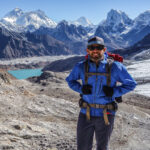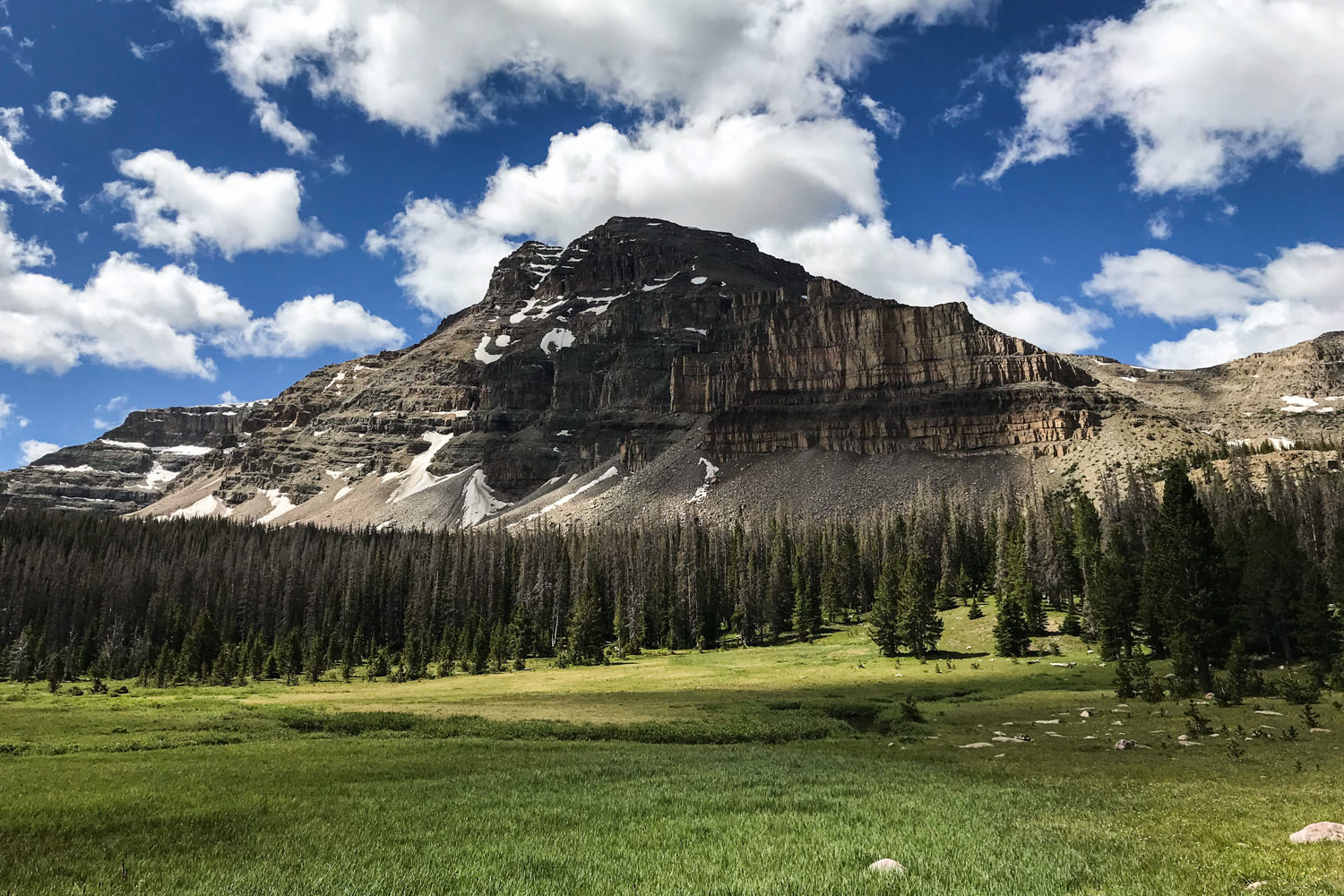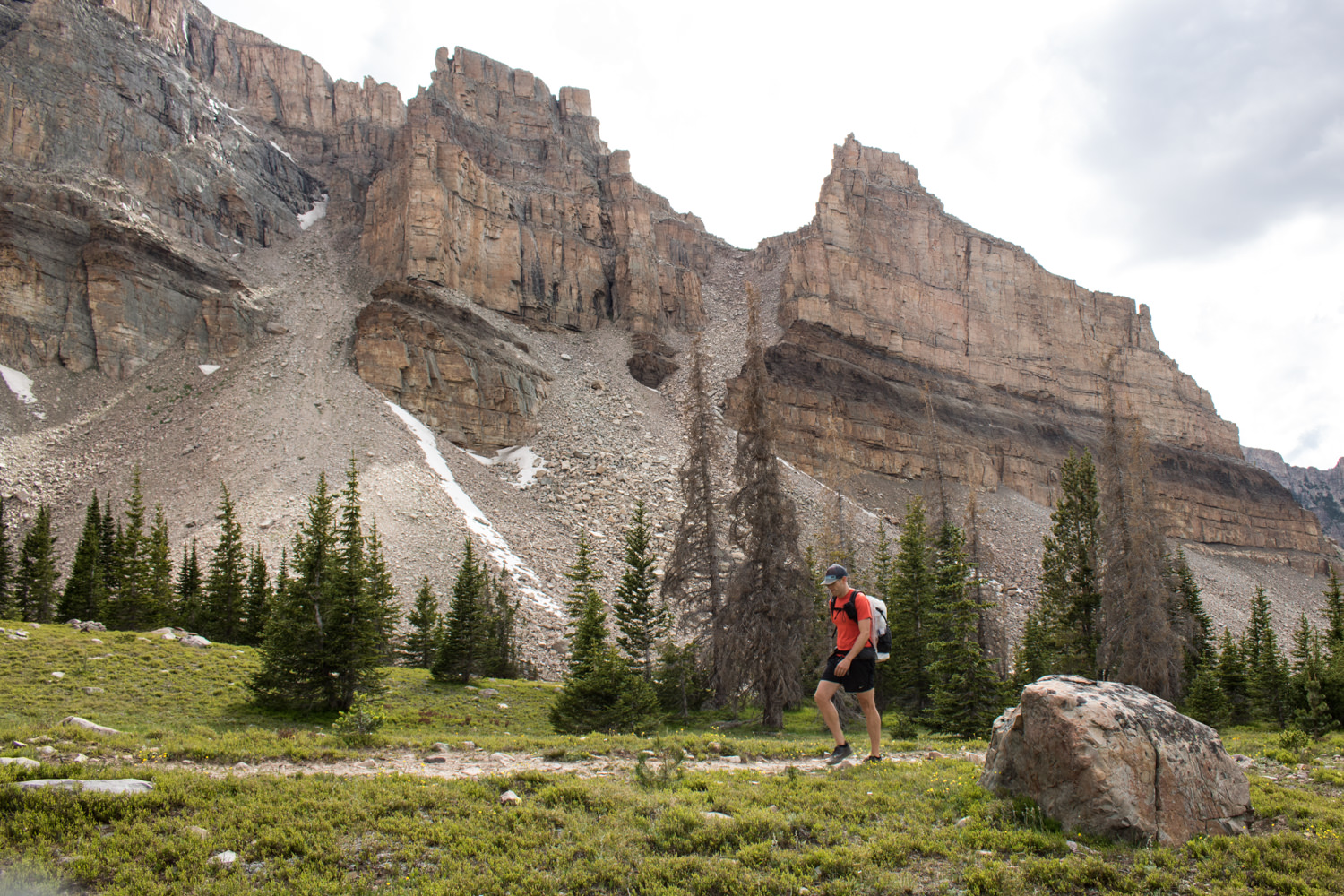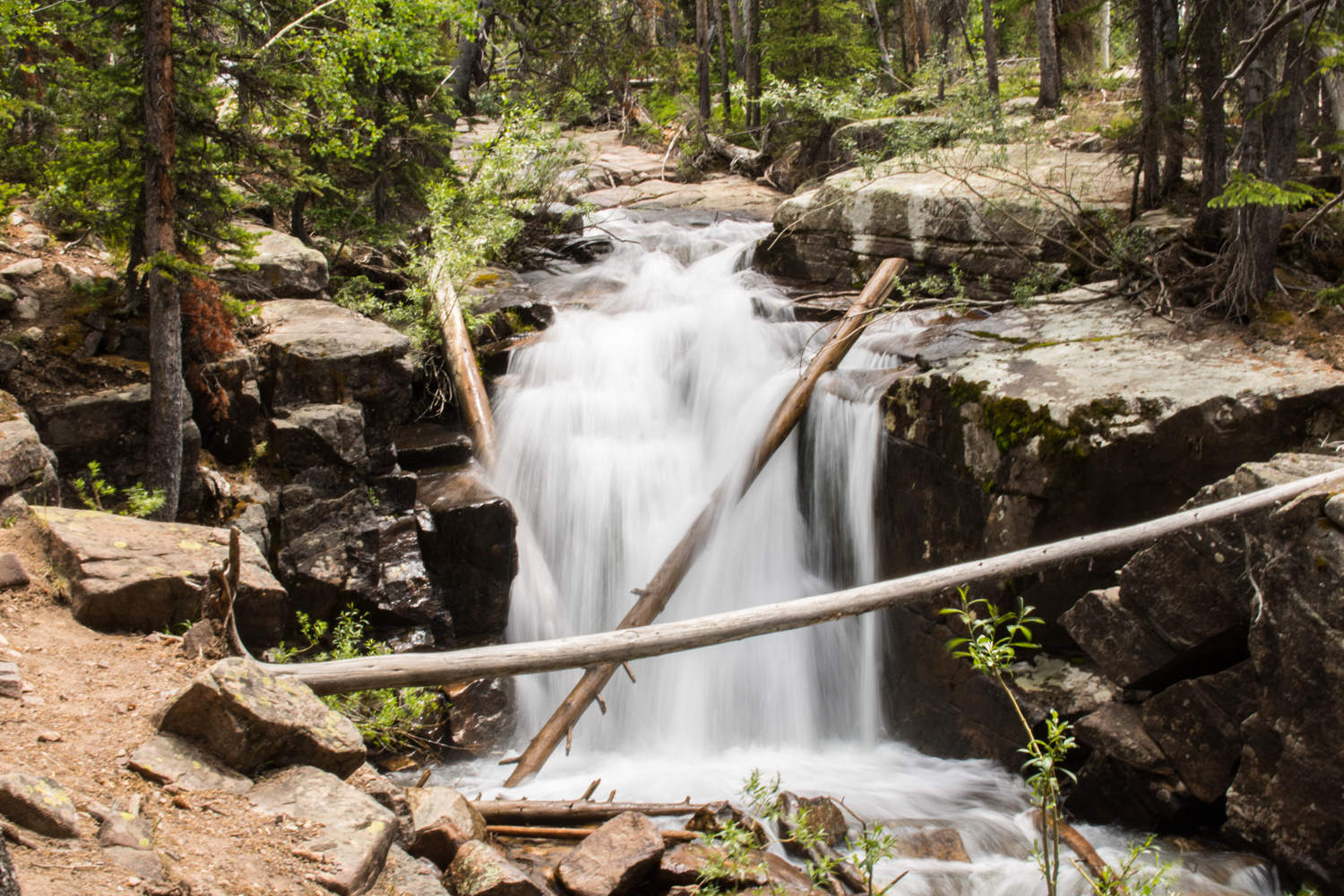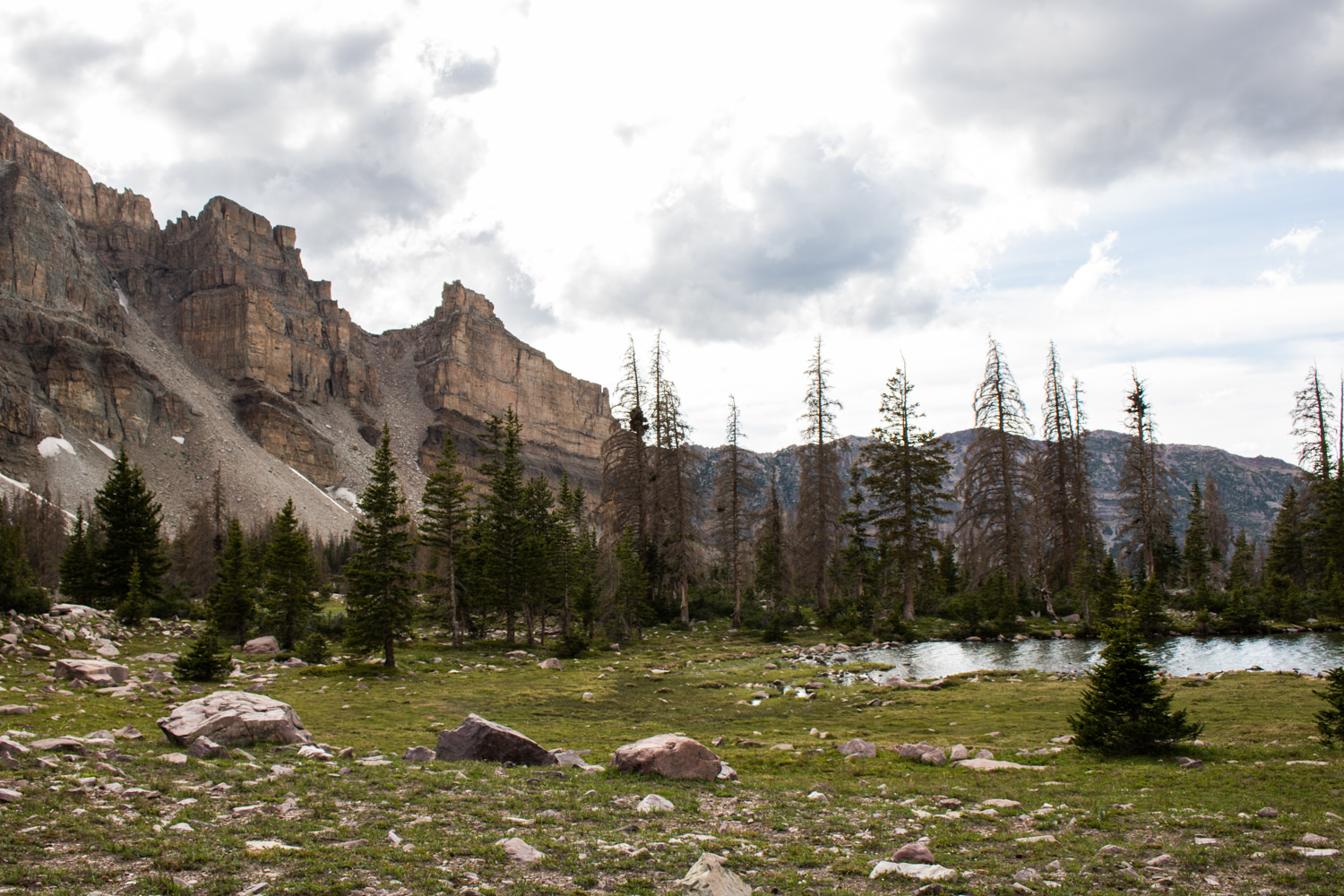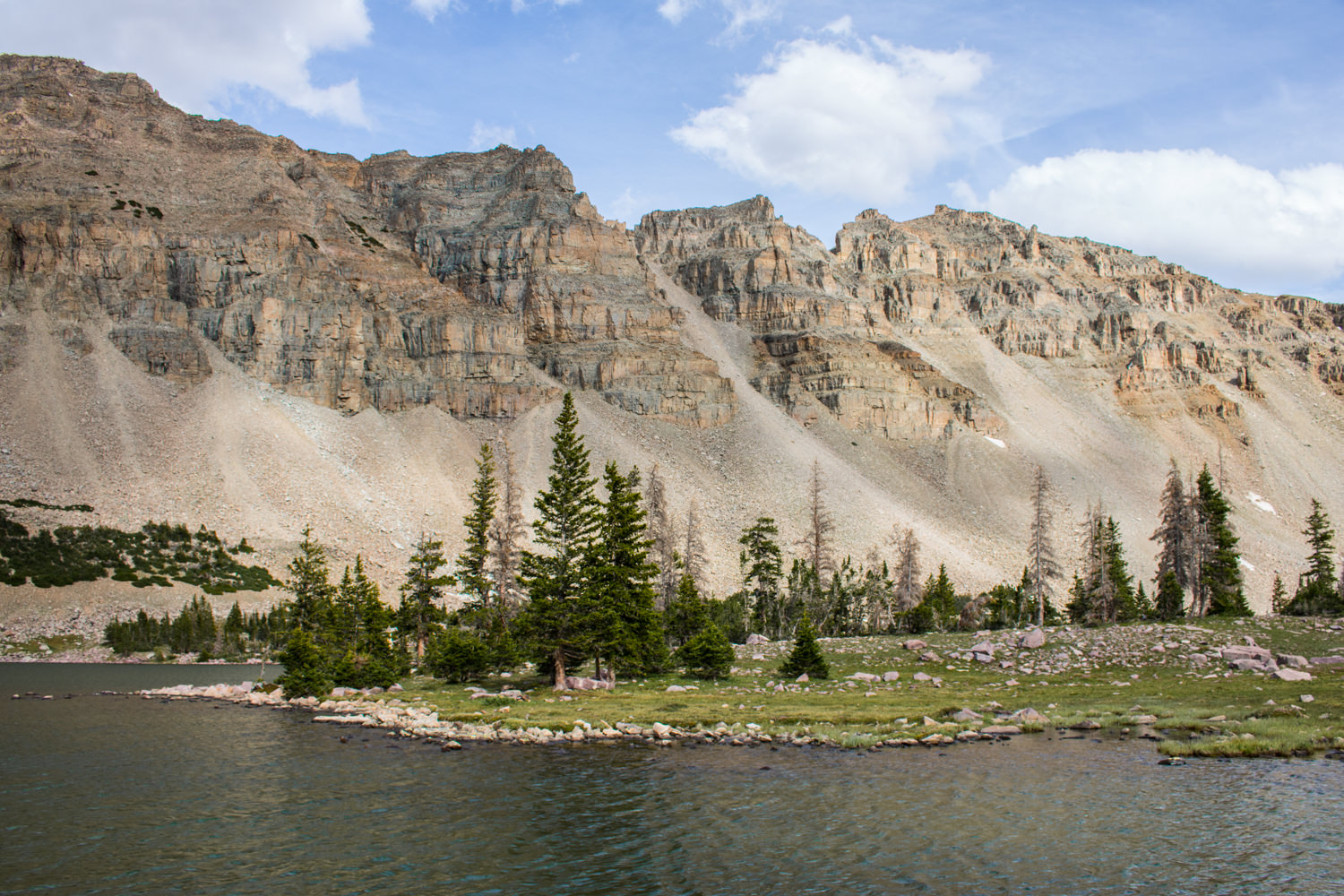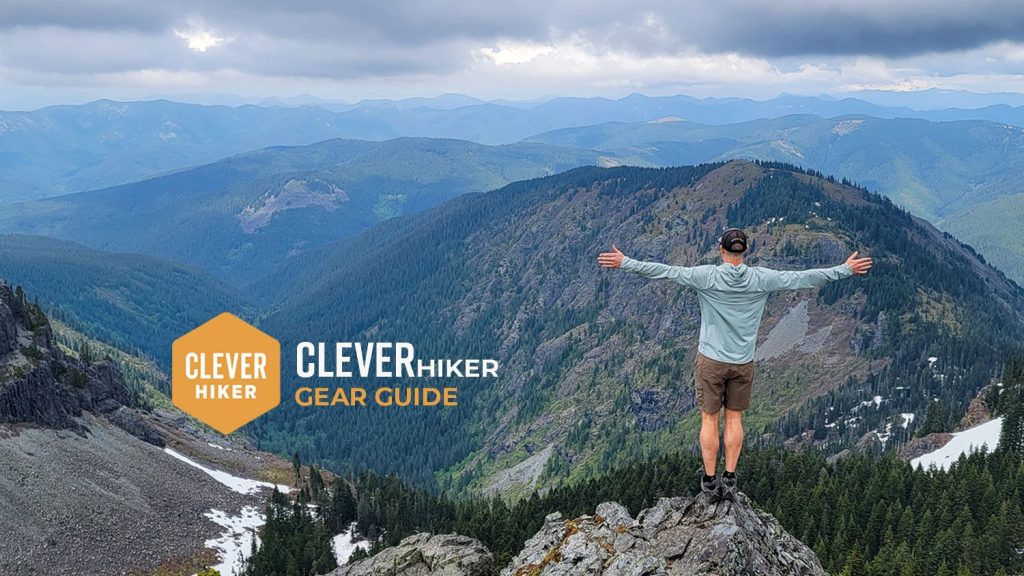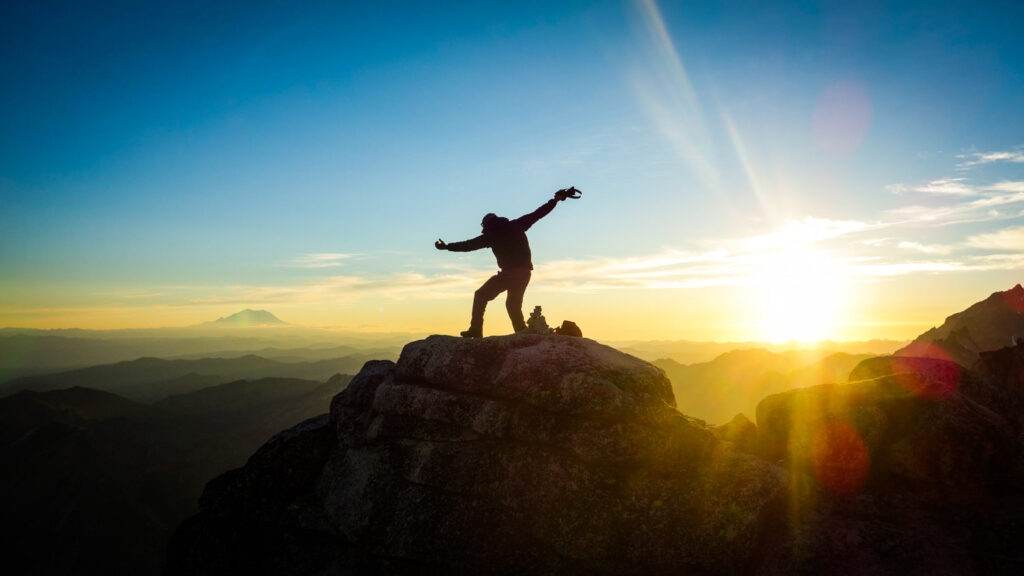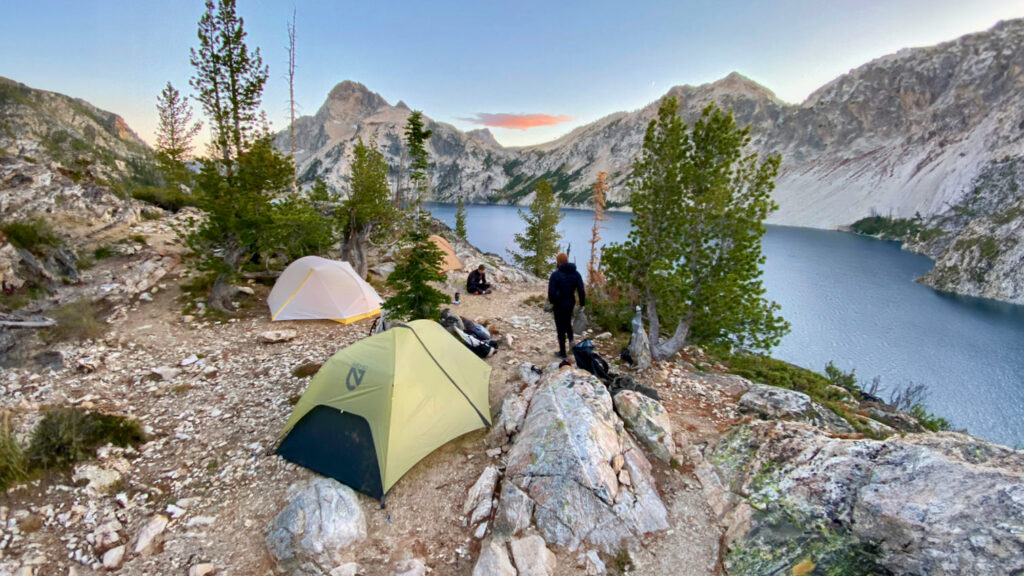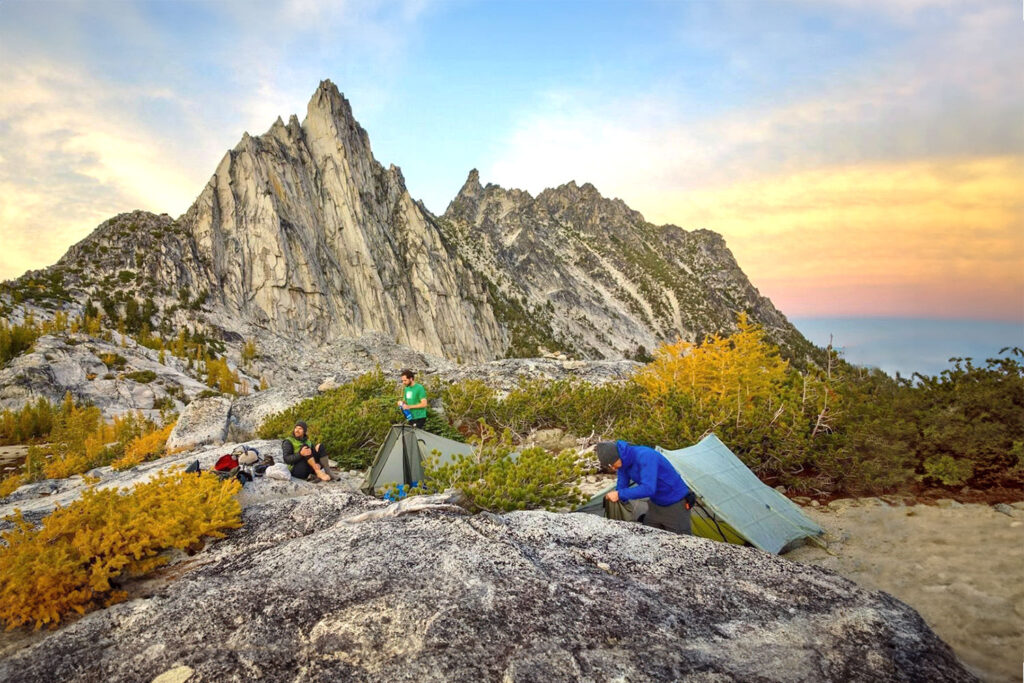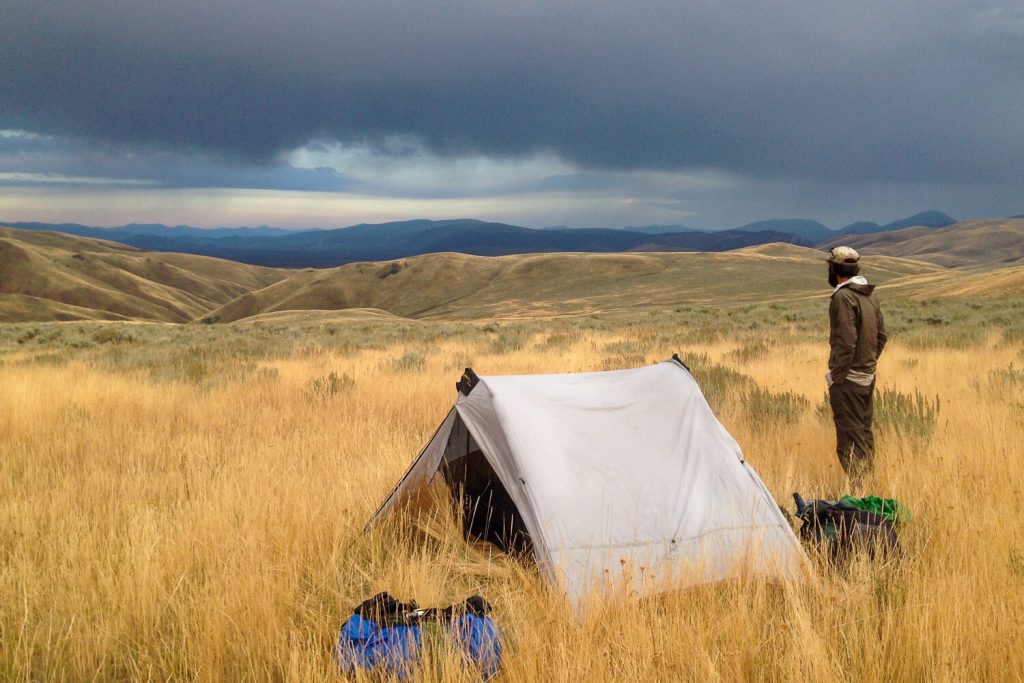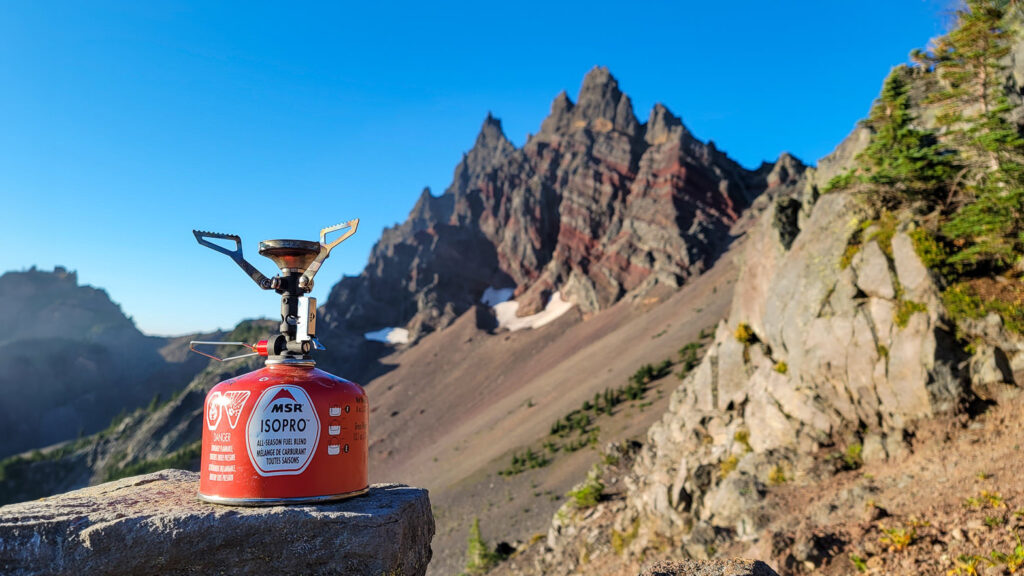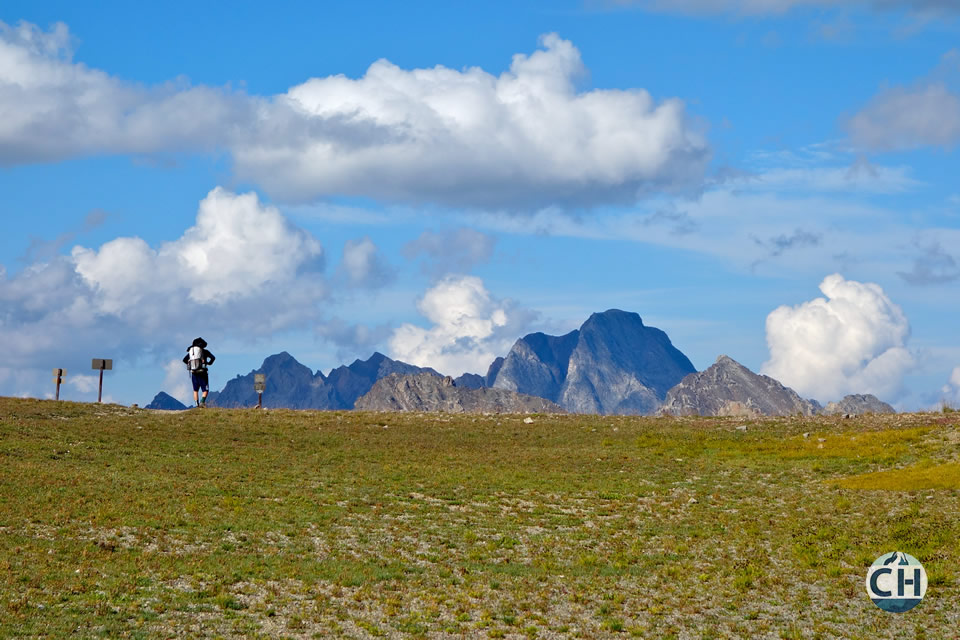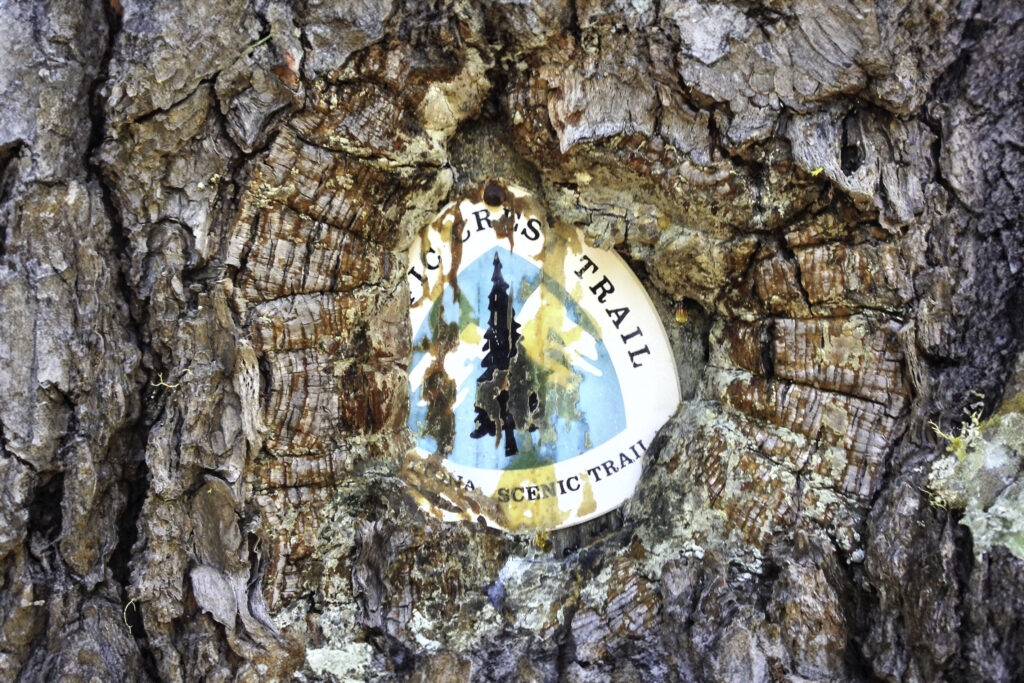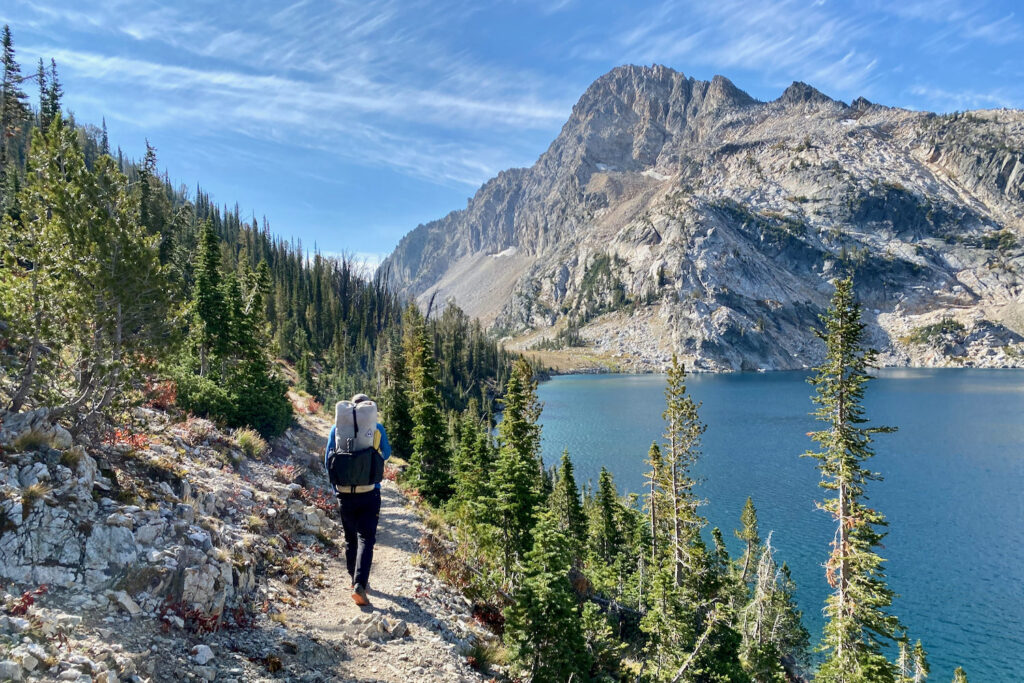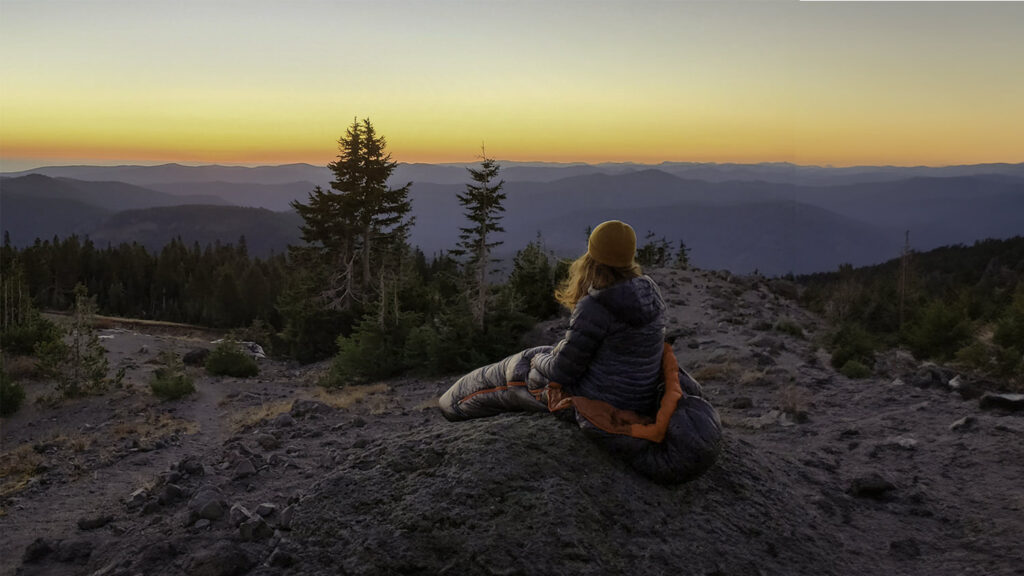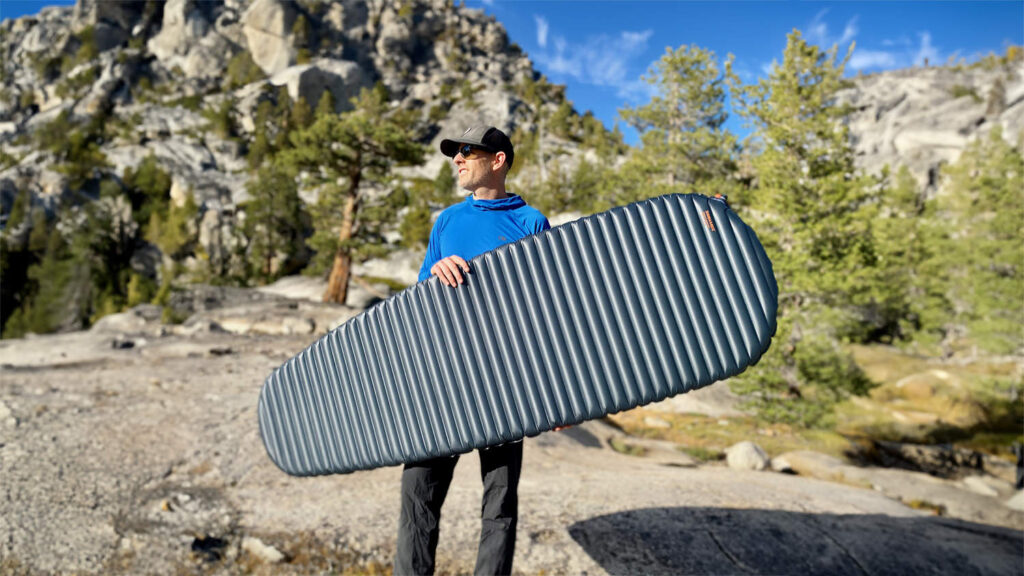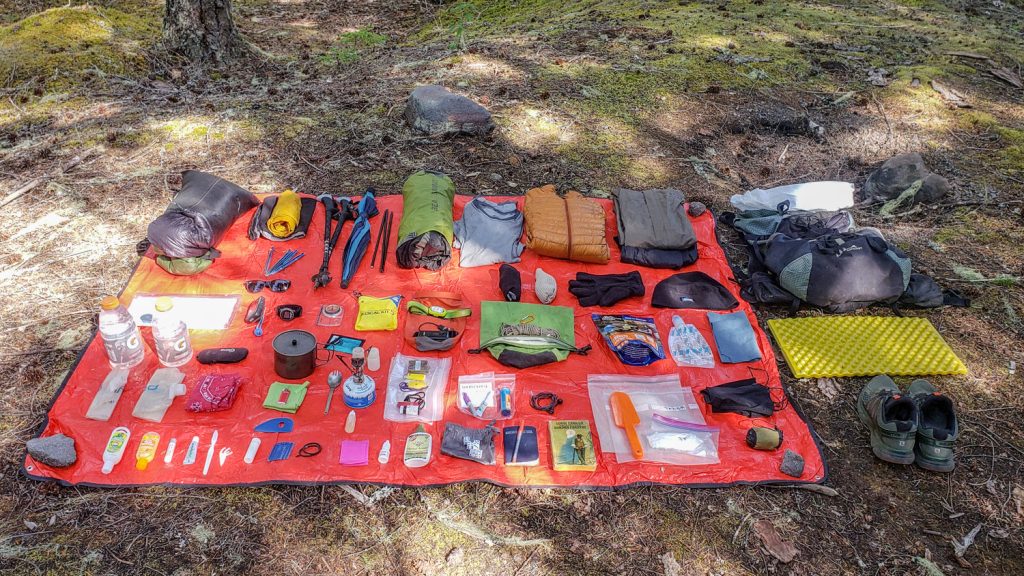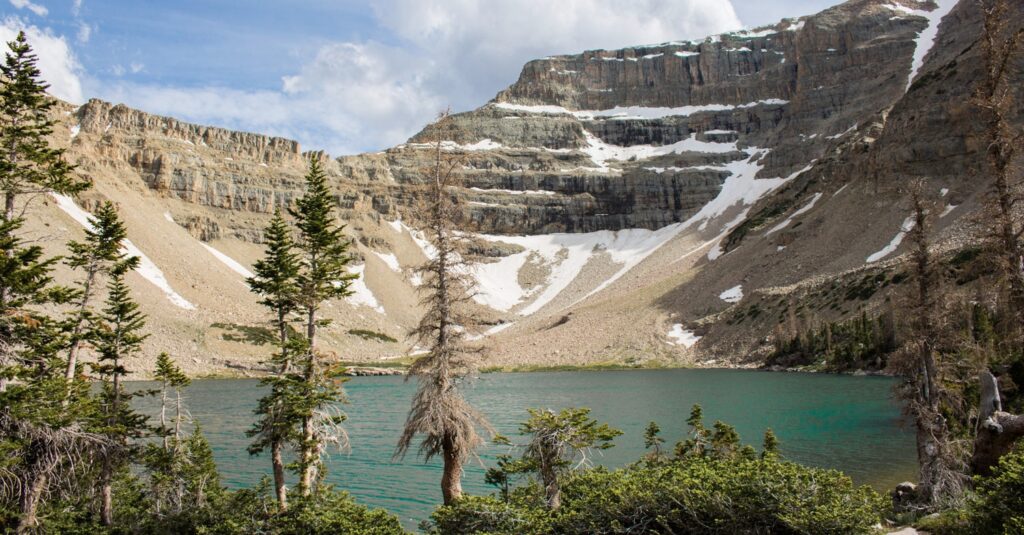
The High Uinta WIlderness is home to a plethora of great backpacking options and a hike to Amethyst Basin is among the very best. Moderately challenging, this hike takes you up to a high alpine lake with gorgeous campsites options. The trail follows the Stillwater and Ostler Forks of the Bear River as it ascends about 2050 feet, passing beautiful waterfalls on the way to a stunning cirque basin. The meadow-framed basin rewards backpackers with a glistening alpine lake with a panorama of views of Ostler and Hayden Peaks. Extra days allow time for climbing Ostler Peak or walking the entire perimeter of the lake.
Quick Facts
Distance: 13 miles (21 km), round-trip
Days Needed: 2-4 days (depending on itinerary add ons)
Elevation Gain/Loss:2,050 feet (625 m)
Peak Elevation: 10,740 feet (3,273 m)
Best Travel Time: July – October
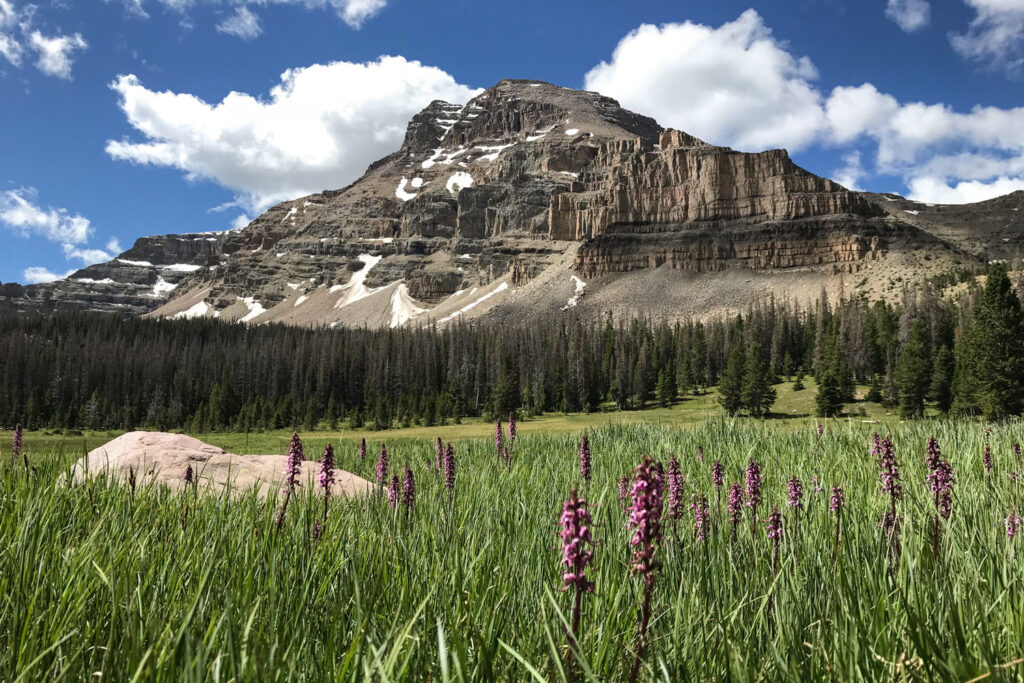
Highlights
- Wildlife, including elk, mule deer, black bear
- Fascinating geology
- Beautiful lake, waterfalls and rivers
- Heavy coniferous forest canopy
- Beautiful meadows and wildflowers
- Well-maintained trails
- Dogs allowed
- High-country lake fishing
Lowlights
- Muddy and rocky trails
- Armies of mosquitos and horseflies, but also ticks and yellow jackets
- Cold lakes makes swimming tempting, but challenging
- Giardia and campylobacter are prevalent in the streams and lakes
- Busy on weekends
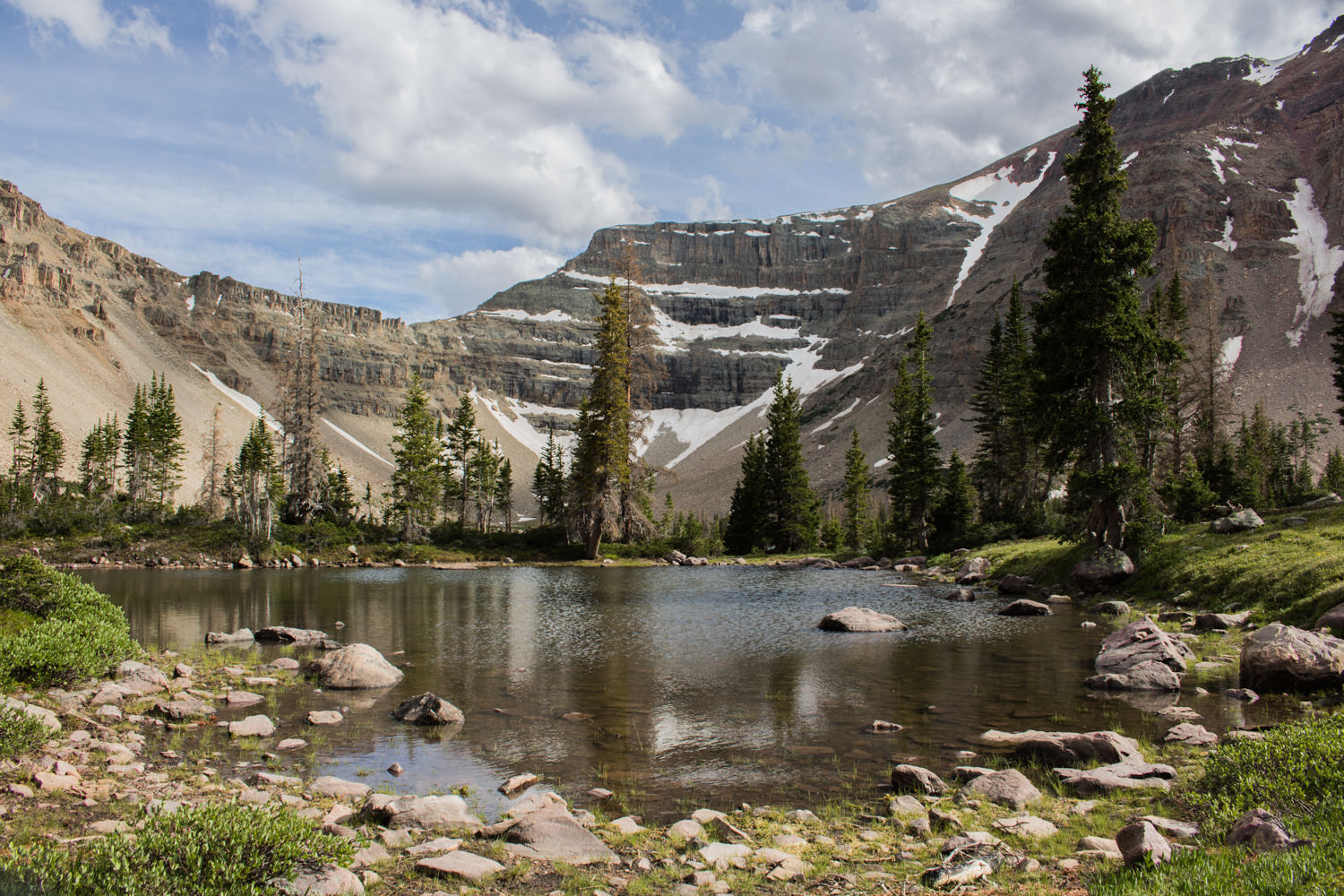
Best Time to Travel
Surrounded by high desert, the Uintas normally receive about 40 inches of precipitation annually—mostly snow. If you hike during summer months above 10,000 feet, daytime highs rarely reach above 80 degrees, while night temperatures during summer range between 30-40 degrees. Afternoon thunderstorms are fairly typical. Below treeline, summer temps range from mid-70s to the mid-90s during the day with nighttime temps rarely dipping below 40.
August is the busiest month for backpacking in the high country (to the basins). Some years June and October are dry and pleasant, but be advised that fast furious storms could arise in a hurry anytime. And lightening is a serious threat above treeline.
For local weather information below treeline, check the National Weather Service for the Uintas.
Difficulty
We rate most backpacking trips in this area as moderate. As always, difficulty ratings depend on the route you choose, experience, physical fitness, pack weight, and weather conditions. Although most routes in the Uintas are not technically demanding, you should always plan thoroughly, train properly, know your limitations, brush up on your skills, and dial in your gear. Doing so will make for a more safe and enjoyable adventure.
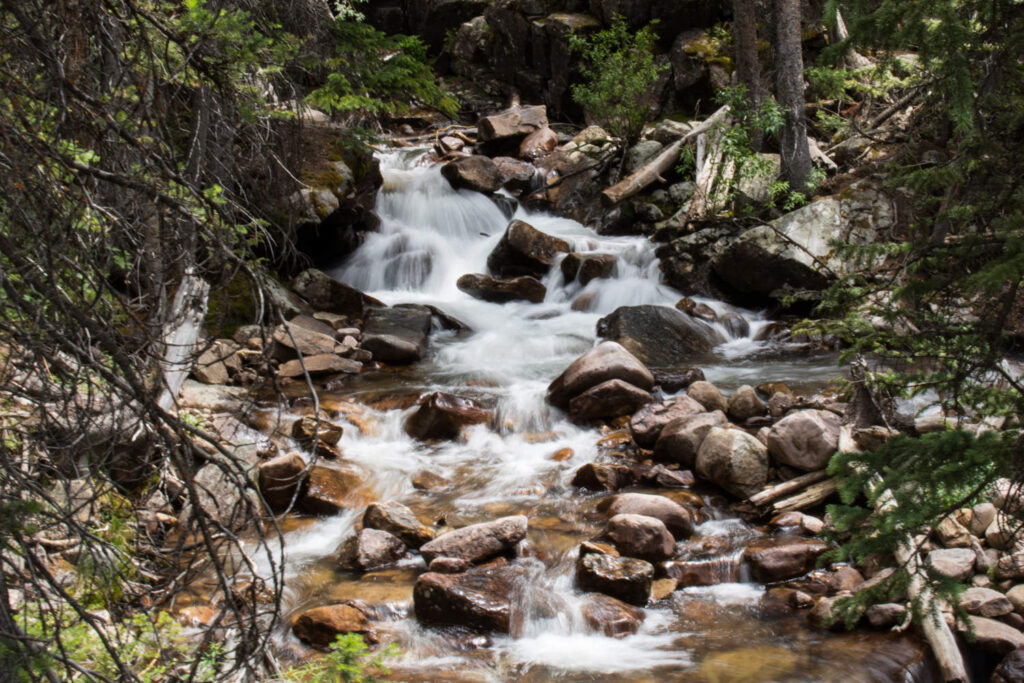
Permits
There is a $6 fee to travel Mirror Lake Highway for 3 days, free if you have an annual Mirror Lake Hwy or American Fork Canyon pass, or an annual National Park Pass. Make sure you hang your pass in your windshield at the trailhead (even in overflow parking) or you will get ticketed. No backcountry permit is required.
For more information contact the Uinta-Wasatch-Cache National Forest, Kamas office at (435) 783-4338 or the Evanston office at (307) 789-3194.
Trailhead
You’ll begin the hike to Amethyst Lake at the Christmas Meadows Trailhead.
From Salt Lake City, head east on I-80 through Parley’s Canyon. Just past Kimball Junction, take exit 146 for HWY 40. Drive another 3.5 miles and take exit 4, Kamas. At the first light in town, turn left. At the Chevron Station, turn right on to the Mirror Lake Highway. Drive 46 miles until you see the sign for Stillwater Campground. The unsigned turnoff for Christmas Meadows is 0.2 miles past the Stillwater Campground sign, to the right. You’ll immediately be on a dirt road signed UT 150. Travel 4 miles to the parking lot and trailhead.
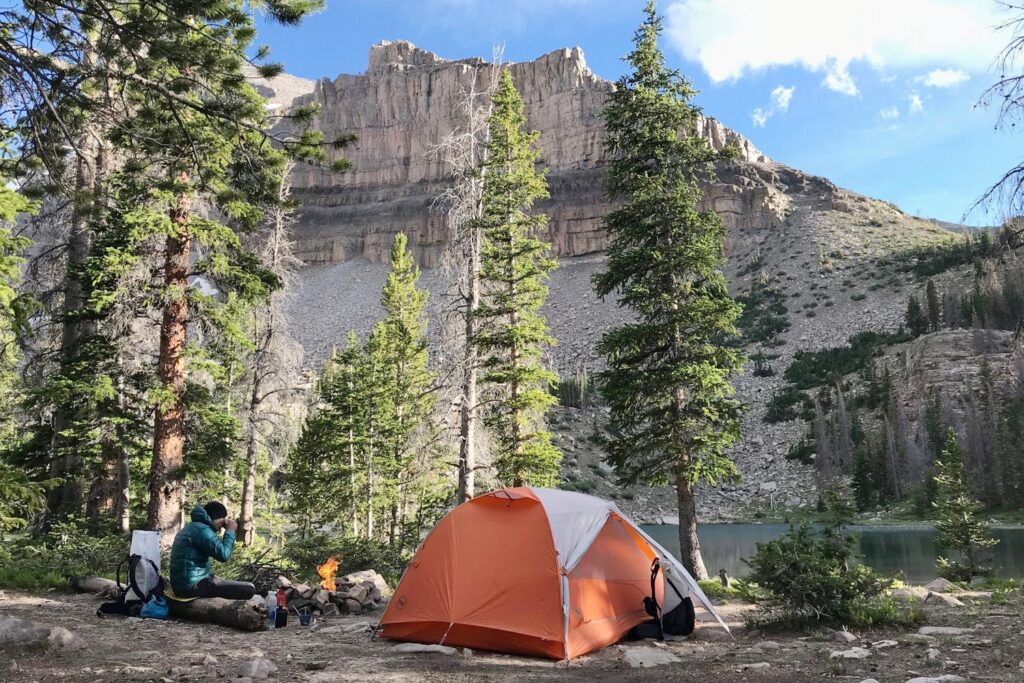
Campsites
- Second meadow on your way up to Amethyst Lake
- Small pond after the second meadow
- BR-24, about 1 mile at the end of the long meadow before you get to the lake (protection from the wind and fewer mosquitos).
- At the far end of Amethyst Lake below the peaks
Possible Itineraries
Two Day Itinerary
Starting Trailhead: Christmas Meadows
Ending Trailhead: Christmas Meadows
- Day 1 – Hike from Christmas Meadows to campsites on the far end of Amethyst Lake below the peaks
- Day 2 – Return to Christmas Meadows
Total Mileage – 12-13 miles (depending on where you camp)
Three Day Itinerary
Starting Trailhead: Christmas Meadows
Ending Trailhead: Christmas Meadows
- Day 1 – Hike from Christmas Meadows to campsites on the far end of Amethyst Lake below the peaks
- Day 2 – Hike around Amethyst Lake or climb as far up Ostler Peak as you feel comfortable.
- Day 3 – Return to Christmas Meadows
Total Mileage – 14-16 miles, depending on itinerary add ons
Four Day Itinerary
Starting Trailhead: Christmas Meadows
Ending Trailhead: Christmas Meadows
- Day 1 – Hike from Christmas Meadows to campsites on the far end of the lake below the peaks
- Day 2 – Hike 11 miles to Ryder Lake, camp
- Day 3 – Hike 11 miles back to Amethyst Lake, camp
- Day 4 – Return to Christmas Meadows
Total Mileage – 36 miles
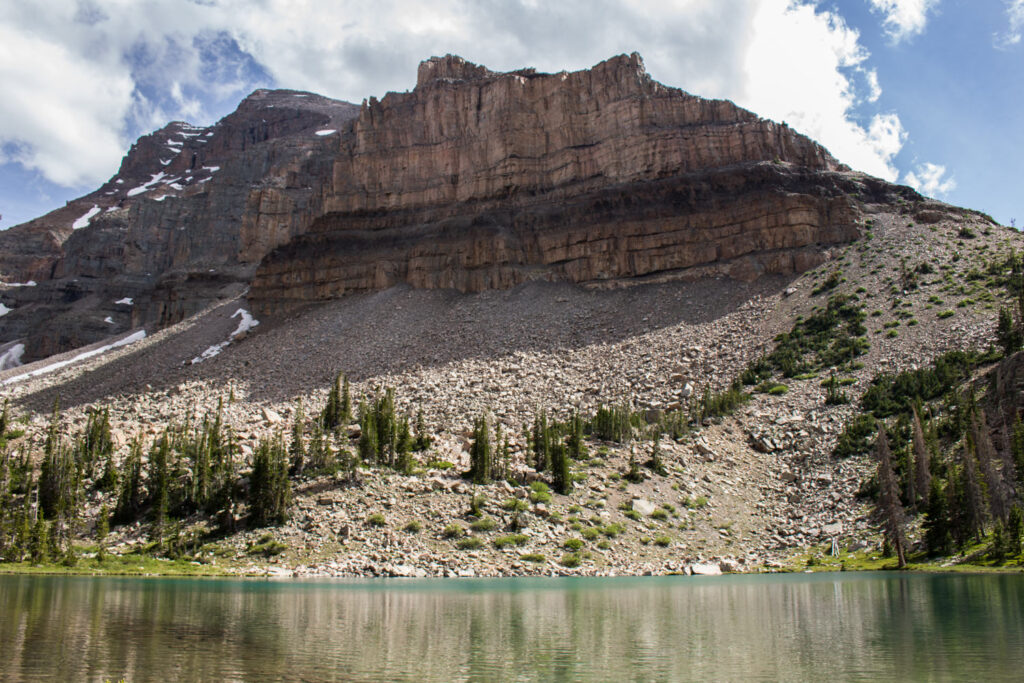
Maps & Guidebooks
- Hiking Utah’s High Uintas: A Guide to the Region’s Greatest Hikes by Brett Prettyman, an outdoors editor for the Salt Lake City Tribune. This guide includes descriptions of 99 routes throughout the backcountry wilderness of Utah’s Uinta Mountains and High Uintas Wilderness, including easy day hikes to great fishing spots, adventurous treks to remote campsites, and extended backpacking trips for intrepid wilderness travelers.
- National Geographic High Uinta’s Wilderness Trails Illustrated Map This map covers the High Uintas Wilderness, as well as the Ashley and Wasatch-Cache National Forests. It features key points of interest and is printed on “Backcountry Tough” waterproof, tear-resistant paper. A full UTM grid is printed on the map to aid with GPS navigation.
- 60 Hikes Within 60 Miles: Salt Lake City by Greg Witt. This book includes many of the best hikes in the Western Uintas with detailed trail descriptions that range from easy strolls to challenging backpacks. Extensive key-at-a-glance information makes it easier to choose a hike based on length, difficulty, or scenery.
- High Uintas Backcountry by Jeffrey Probst This trail guide travels the length of the Uintas with descriptions on 99 hikes, 600 fishable lakes, and over 400 miles of streams. Each story includes a trip planner, photo, and map. The appendix includes full maps of all areas, a campground and trailhead directory with directions. There are over 200 photos and maps.
- Gaia Phone app GPS and Caltopo Mapping Software – We use both these services for many of our backpacking trips to assist with route planning (Caltopo) and on-trail navigation (Gaia).
Water
Water is plentiful along the trail to Amethyst Basin and accessible from small streams and lakes. Though many sources look pure, Giardia and Campylobacter are present in this area so we recommend using a lightweight water filter (here’s a list of our faves). We carried the MSR Trail Shot on our most recent trip and were happy with its performance. Two other good lightweight options are the SteriPen Ultra and Aquamira Drops. Check out our best water filters list for more excellent options.
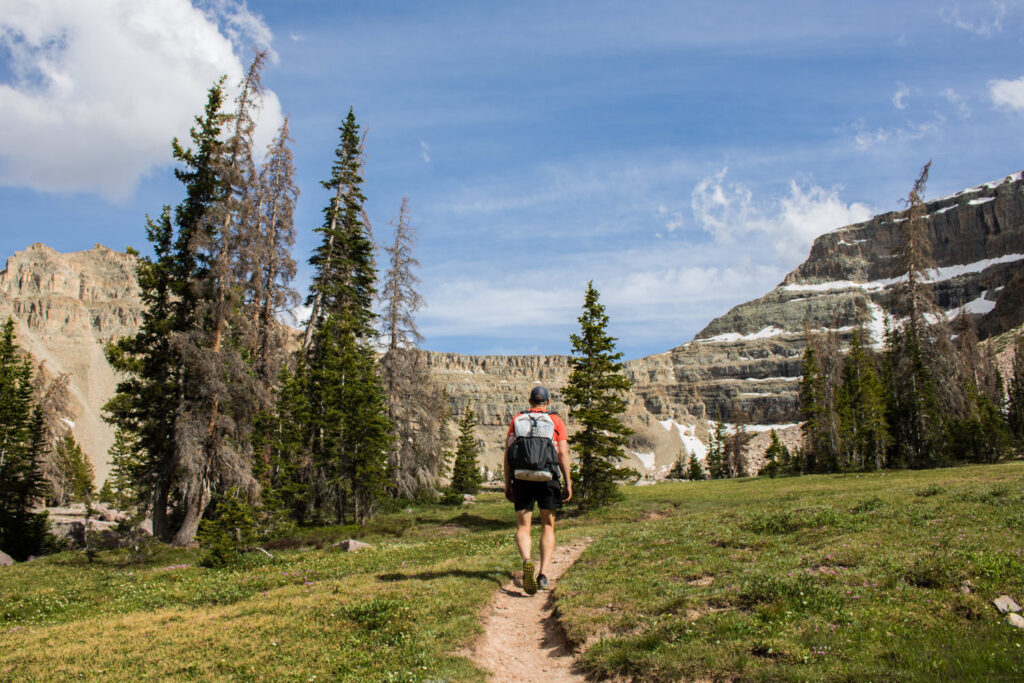
Regulations
For a full list of wilderness regulations in this area, visit this website. But in, general, the following apply:
- Stay on designated trails and do not cut switchbacks.
- Select a campsite 200 feet from trails or streams.
- Wash yourself and dishes away from water sources and only use biodegradable soap when necessary.
- Bury human waste and fish entrails 6-8″ deep and 200 feet away from water sources.
Critters & Food Storage
Black bears are not a problem in this area so there are no food storage requirements. That said, you should always protect your food against rodents and small critters, which actually tend to cause many more problems than bears. We recommend packaging all your food and scented products in a food storage container such as an Ursack.
Bugs
Mosquitoes are present along this route and can be pretty vicious, especially early in the season and near bogs and water sources. Hiking later in the season is often bug-free. Use a combination of permethrin on your clothing and bring a small bottle of DEET for exposed skin to provide full protection.
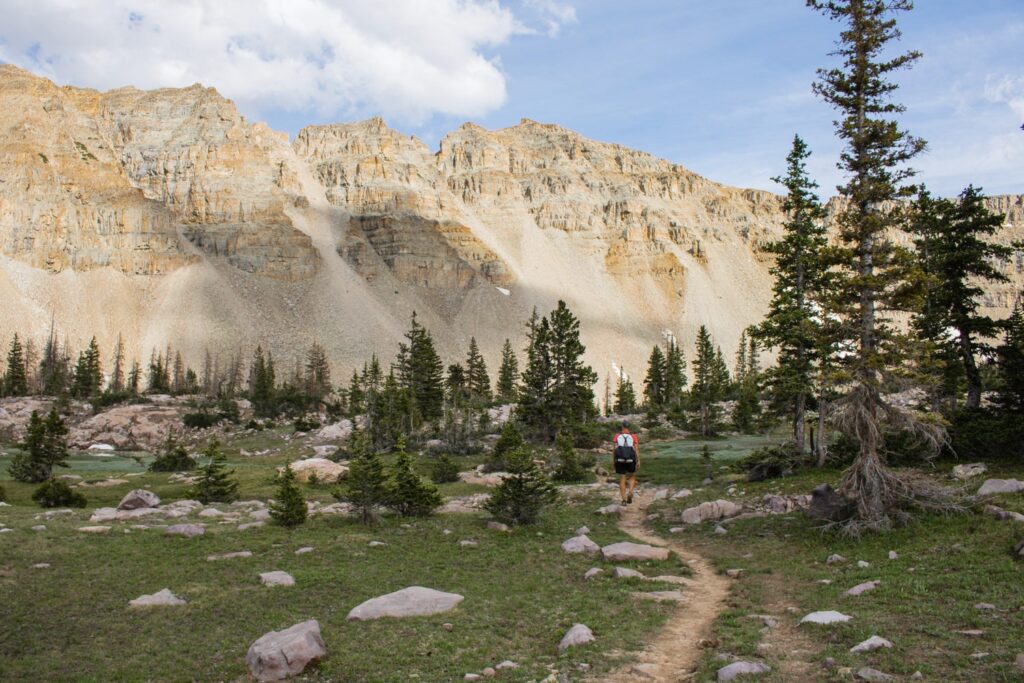
Backpacking Gear
We prefer lightweight backpacking because it’s more comfortable and it allows us to cover more ground with less effort. For recommendations on our favorite lightweight backpacking equipment, check out the CleverHiker Gear Guide and Top Picks page.
TENT
We used the Big Agnes Copper Spur HV UL3 tent on this trip for its lightweight livability. The Copper Spur is a top pick on our best lightweight backpacking tents list.
BACKPACK
We used Hyperlite Mountain Gear’s Southwest 2400 backpacks on this trek. The Southwest is incredibly lightweight, durable, nearly waterproof, and is a top pick on our best lightweight backpacks list.
SLEEPING BAG
We used the Feathered Friends Egret UL 20 and the Western Mountaineering UltraLite sleeping bags on this hike for night time temperatures right around freezing. Both sleeping bags are lightweight, warm, and make our list of the best backpacking sleeping bags.
SLEEPING PAD
We used the Therm-a-Rest NeoAir XLite and NEMO Tensor Insulatedsleeping pads on this trip. Both are light, comfortable, warm, and make our list of the best backpacking sleeping pads.
COOKING SYSTEM
We used the BRS Stove, Snow Peak Mini Solo Cookset, and Snow Peak Folding Spoons on this hike, all of which make our top picks gear list and best lightweight stove list.
WATER PURIFIER
We used the MSR Trail Shot as our main purification method on this trip. It’s lightweight, affordable, and makes our best water purifiers list.
SHOES OR BOOTS
We wore Saucony Peregrine 8 trail runners (men’s and women’s) on this trail and they were excellent. If you prefer boots, make sure they’re lightweight and break them in really well before your trip. Here’s why we prefer hiking in trail running shoes: 5 Reasons to Ditch Your Hiking Boots. Also, here’s our list of the best backpacking shoes and boots.
HEADLAMP
A small headlamp like the Petzl Actik is an affordable, bright, and lightweight option. We’re big fans of ours.
FOOD
You’ll have to carry all the food you’ll need on this trip. Check out our Best Lightweight Backpacking Food Guide and our Best Freeze Dried Backpacking Meals for some of our go-to grub recommendations.
CLOTHING
Here are some of our favorite hiking/backpacking clothing items from our Top Gear list.
- 1 Rain jacket shell: Patagonia Storm Racer / Rab Kinetic Plus
- 1 Pair rain pants (optional): Mountain Hardwear Stretch Ozonic
- 1 Down jacket: Patagonia Micro Puff Hoody & Montbell Plasma 1000
- 1 Fleece jacket: Extra warmth under your down jacket that will be warmer when damp and better to hike in.
- 1 Pair hiking pants: PrAna Zion Stretch or running tights
- 1 Pair hiking shorts: Nike dri fit running shorts
- 1-2 Hiking t-shirts: Nike dri fit t-shirts
- 1 Long-sleeve shirt: Nike dri fit quarter zip
- 1-3 Pair underwear: ExOfficio boxer briefs or ExOfficio women’s briefs
- 2-3 Pair socks (add thin sock liners if using boots): Balega running socks for warm weather & SmartWool mountaineer socks for in camp and on snow.
- 1 Pair long john bottoms and a long john top for nighttime use (optional).
- 1 Warm fleece hat
- 1 Sun hat
- 1 Pair fleece gloves or mittens
- 1 Pair rain mitts for wet trips (optional)
MAP &COMPASS
Although the trails here are well-marked, you always want to hike with a good map and GPS system, such as Gaia GPS. For our trip, we hiked with the National Geographic High Uinta’s Wilderness Trails Illustrated Map and used the route description provided in Hiking Utah’s High Uintas: A Guide to the Region’s Greatest Hikes. In addition, we always hike with a lightweight compass.
FIRST AID KIT
Always bring a small personalized first aid kit. We use the Ultralight .7 Kit and add extras, like painkillers and personal medications.
SUN PROTECTION
Sunglasses (polarized recommended), sunscreen, and spf lip balm are an absolute must for every backpacking trip.
POCKET KNIFE
We brought along a small Swiss Army Knife, which came in handy here and there.
OTHER ITEMS
- Small Towel: the Nano pack towel is great.
- Cash and ID
- Permits
- Personal Toiletries
- Hand Sanitizer: Always apply after using a bathroom and before eating.
- Wet Wipes: These can be useful for cleaning up after hiking.
- Insect Repellant: Use a combination of permethrin on your clothing and bring a 1oz bottle of DEET for exposed skin to provide full protection.
- Camera: The Sony RX100 is our go-to camera for lightweight backpacking

